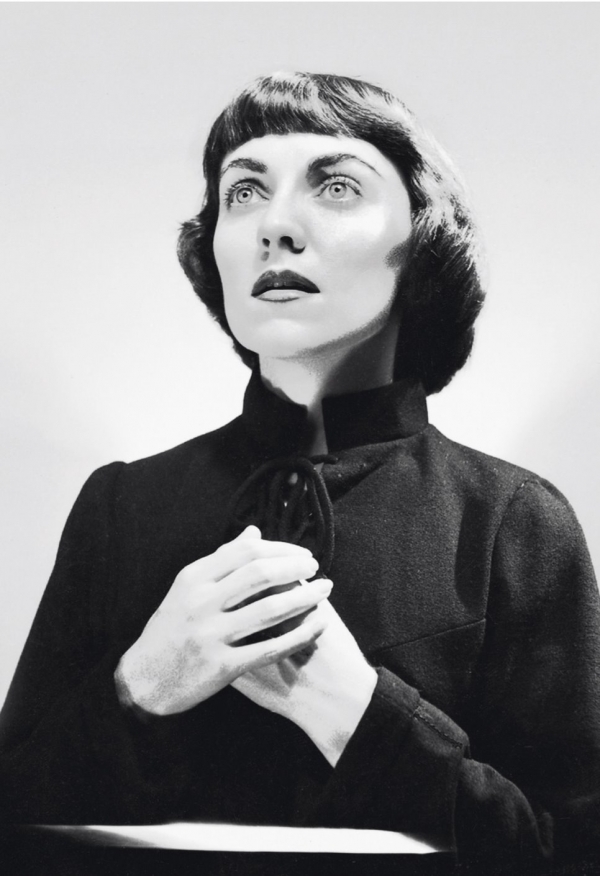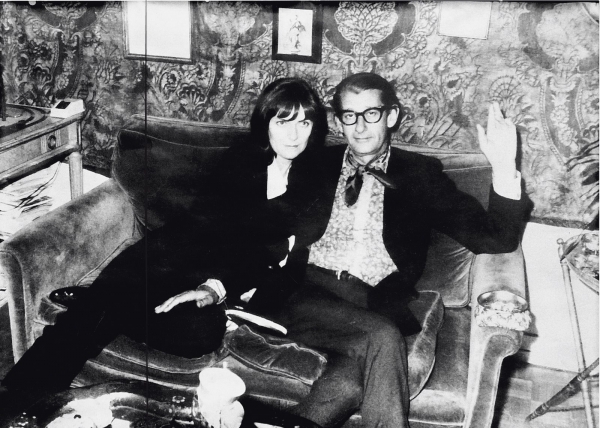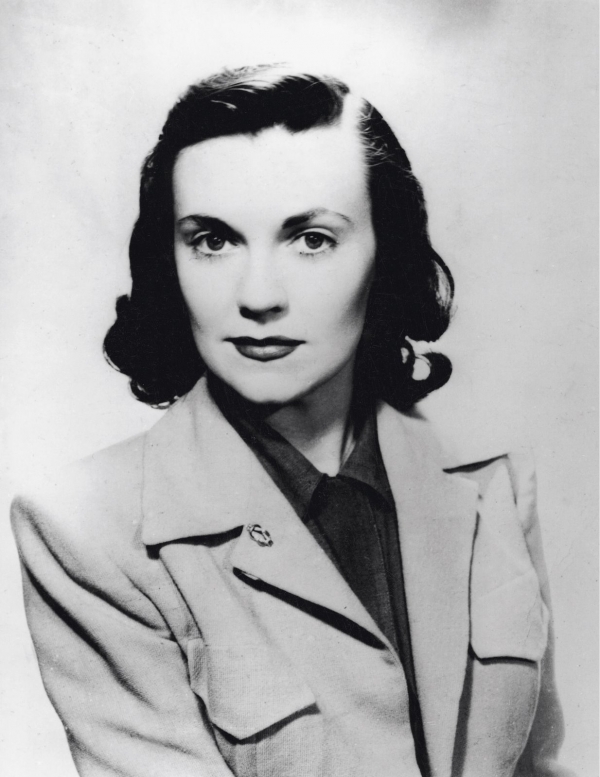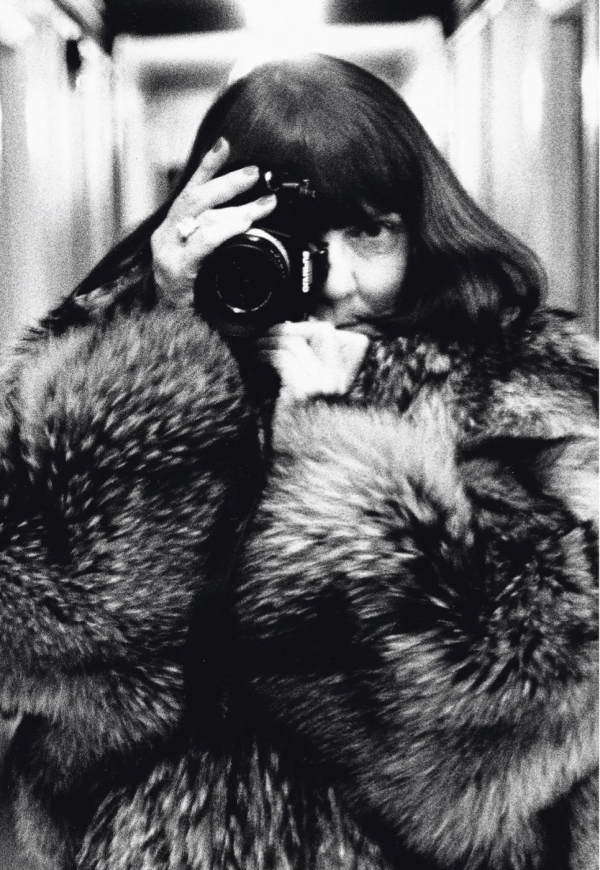
JUNE NEWTON, UNE HEROINE DE NOTRE TEMPS
Le 23 mars prochain, Frédéric Mitterrand inaugurera la rétrospective Helmut Newton, organisée au Grand Palais. Une première à Paris pour célébrer un œil de génie dont les photographies demeurent des icônes. Gardienne de sa mémoire, June Newton sera à Paris pour l’évènement.
Il était une fois June Browne-alias June Brunell, son nom d’actrice, plus connue sous le nom d’Alice Springs , et de June Newton. Jusqu’à la mort du photographe, survenue à Los Angeles, en janvier 2004, alors qu’il conduisait sa Cadillac, le couple mythique aura vécu plus d’un demi siècle d’amour, de travail, de passions. Au Jebensstrasse 2, à Berlin, la Fondation Helmut Newton, se situe face à la gare d’où partit à dix huit ans, le jeune Helmut, pour échapper aux persécutions nazies. Depuis juin 2004, l’Histoire donne rendez vous aux amants unis désormais dans ce lieu exceptionnel. A la fois icône et directrice artistique, photographe plus connue sous le nom d’Alice Springs-, et curator, June Newton aura multiplié les rôles, renonçant à sa carrière en Australie qui l’avait élue meilleure actrice de théâtre en 1956, travaillant sous pseudonyme, voyageant entre Londres, Paris, Monte Carlo et Los Angeles, pour assumer un rôle qui ne fut jamais second. « The moving force behind the Berlin project was my wife », dit un jour Helmut Newton.
A Berlin, June Newton a inauguré la HNF (Helmut Newton Fondation), le 3 juin 2004, moins de six mois après la disparition d’Helmut. « Dans ce court laps de temps, elle a fait seule terminer les travaux, mis sur pieds l’administration, rassemblé le fond permanent et inauguré les deux premières expositions temporaires, « Sex and Landscapes », et « Us and them » », raconte un proche. Depuis l’ouverture du lieu, plus d’un demi million de visiteurs se sont rendus dans ce majestueux bâtiment, de plus de 2500 m2, doté de neuf grands salles, d’une projection room, réparties sur 2 étages, avec une librairie et un café, et même, un espace où sont présentés des vêtements, des appareils photos, des lettres, formant l’univers intime du photographe. La Fondation Helmut Newton est située dans ce qui fut autrefois le Landwehrkasino, un lieu destiné à l’enseignement et aux distractions des officiers prussiens de Berlin Charlottenburg… Son lipstick rose et ses sneakers blanches la révèlent, au mieux de sa force, sans atténuer la part de mystère qui la définit. June Newton est une femme remarquable, pour laquelle la vie est un devoir de mémoire et d’envies.
En 2008, Stiletto consacrait un portrait exclusif à June Newton. Voici ses réponses, révélant une héroïne de notre temps.
Comment vous définissez vous ?
In the Paris Bar in Berlin there is a neon sculpture by Martial Raysse “He who rests rusts” – I think that sums me up.
Quel est votre trait de caractère favori ?
Clarity of mind.
Qu’est ce qui fait votre force ?
The man upstairs.
Quel est votre principe absolu dans la vie ?
As Polonius said to Hamlet, “This above all. To thine own self be true …”
Quelle est votre obsession quotidienne ?
The Helmut Newton Foundation.
Pouvez-vous nous raconter votre journée type ?
Mornings are spent working with my secretary and assistant. Depending on the weather, I go for a walk or I swim in the pool of the Beach Hotel, which is a stone’s throw from where I live. I take a half hour’s siesta after lunch and go back to work. Evenings are spent dining with friends or alone. Writing, I have kept a diary since the ‘70s, reading, watching DVDs of films or television.
Qu’est-ce qui vous amuse le plus aujourd’hui ?
Planning future projects.
Quel souvenir absolu gardez-vous d’Helmut Newton ?
His uniqueness. He was one of a kind. As Josephine Hart (Lady Saatchi) said in her speech at the US Vogue’s memorial for Helmut in Paris “We truly shall not look upon his like again”.
Que vous a-t-il appris que vous ne connaissiez pas de vous-même ?
Many things. He opened the door to a wonderful life.
Quelle était sa devise ?
On our first encounter, Helmut said to me “I work hard and I play hard”. As I didn’t play hard, I expected I never see him again.I don’t know if he had one, but “dienst is dienst and schnaps is schnaps” (work is work and schnaps is schnaps) were words I often heard.
Quelle qualité préférait-il chez les femmes ?
You would have had to ask him.
Vous parlait-il de ses modèles ?
Helmut had a great relationship with the girls he worked with. He manipulated them – changed them into what he wanted them to be as he himself said in my video film “Helmut by June”. The girls had homes to go home to and so did he.
Ce qu’il détestait avant tout ?
Detesting? He detested no one. He hated no one. He loathed no one. Revenge and anger, these traits were simply not in his character.
Ce qui vous rapprochait de lui par-dessus tout, ce qui scellait votre amour, de façon irréversible, absolue?
We enjoyed one another’s company. There was complicity. We were not joined at the hip. We let the wind blow free between the cypress and the oak (Kahlil Gibran) and it’s strange that I write this, remembering a big old oak tree on the property of our house in Ramatuelle and a little cypress tree that we planted in front of the house which has grown taller than the house. The wind is not disturbing them.
Dans quelles circonstances l’avez-vous rencontré ?
I entered Helmut’s life when he opened the door to his studio and said “Come in”. I had met a girl who worked as a negative retoucher in his penthouse studio in Melbourne and she suggested I go see her boss for modelling work. So I did.
Qu’aimeriez-vous dire, pour tordre le cou à tous les clichés, à son sujet ?
Helmut set a precedent. He put sex into fashion, landscapes, flowers. He opened up forbidden territory that enabled others to follow. That his work disturbed some people was not his problem. He meant no harm.
Comment interveniez-vous dans son travail ?
Helmut would have become who he became with or without me. I championed him. Aided and abetted him, from the moment I saw his work on the wall of his tiny reception room before he opened the door to his studio and said “come in”.
Comment, en tant que femme, et en tant que photographe, avez-vous vécu à ses côtés ?
When we went to live in Paris, I gave up acting to be with Helmut. His career soared. To relieve my boredom, he presented me with canvasses and a box of paints. I bought some little books on “How to Paint” from the local department store. I still have the box of paints and the first painting I made, and then one day, Helmut, because of a cold, was unable to go to the Place Vendôme to photograph a model for an advertisement for Gitanes cigarettes. After a brief lesson on how to read the light meter and load the camera, I took his place. When the cheque from the client arrived, in Helmut’s name, I knew I was in business. So, I became a photographer and have been one ever since.
Comment expliquez-vous l’extraordinaire relation qui vous unissait ?
It was no more extraordinary than many other married couples. Fame did not change our way of life.
Bien des couples célèbres ont marqué l’histoire, je pense à Scott et Zelda Fitzgerald, Jean-Paul Sartre et Simone de Beauvoir, June et Henry Miller. Comment situeriez-vous le vôtre ?
I am flattered by the comparison, however, during a séance for YSL in Paris, Loulou de la Falaise-Klossowski likened us to Laurel & Hardy.
Anaïs Nin, écrivait : « Que puis-je faire avec mon bonheur ? Comment puis-je le garder, le cacher, l’ensevelir dans un lieu où jamais je ne le perdrais ? J’ai envie de m’agenouiller, tandis qu’il tombe sur moi comme de la pluie, de l’envelopper dans de la soie et de la dentelle, et de le presser une nouvelle fois contre mon cœur ». Que vous inspire cette phrase ?
Happiness was Helmut. It flew out of my life when he suffered a heart attack and crashed the SUV Cadillac he was driving out of the garage of the Chateau Marmont into the break wall of Marmont Lane.
Qu’est ce qui vous fait le plus rêver aujourd’hui ?
An angel – to guide me in the right direction to ensure the security of the Helmut Newton Foundation in Berlin.
Ce qui vous fait fuir ?
Death. I once dreamt that he opened a door and bade me come with him. I told him to leave as I had things to do. “There’s no time – come with me”, he said.
I woke up.
I still have things to do.
Ce que vous redoutez, par-dessus tout ?
I dread and fear nothing.
I would like your readers to remember that life is not a rehearsal.
Old age is not for cissies.
Paris, mai 2008.
Helmut Newton

June et Helmut, Paris, 1970’s Brofferio

Melbourne, 1947 Helmut Newton

Hotel Pierre, New York, 1986 Alice Springs
